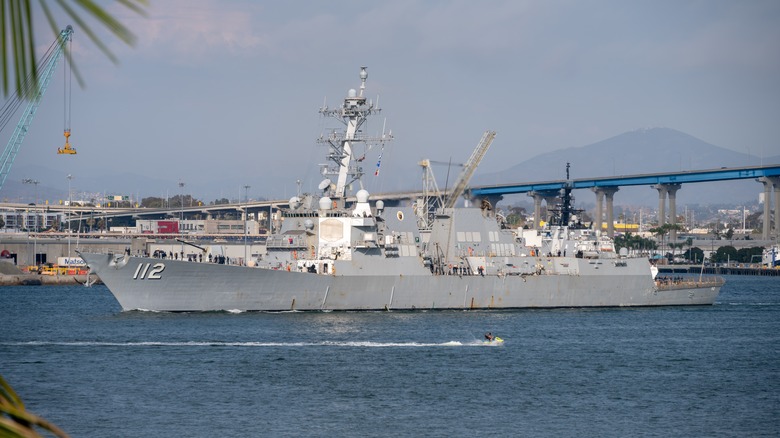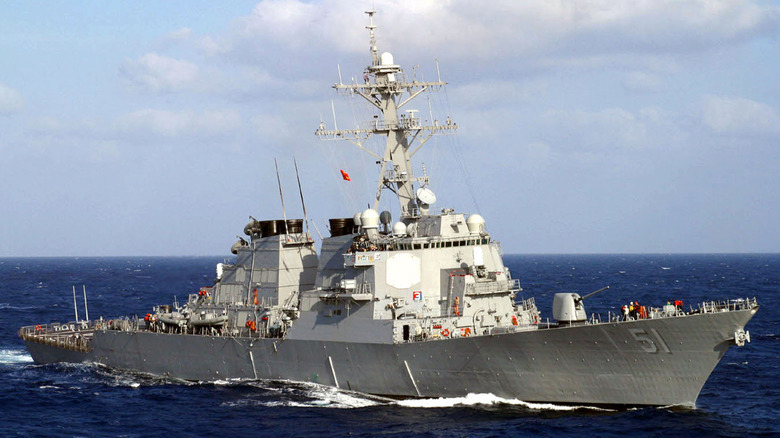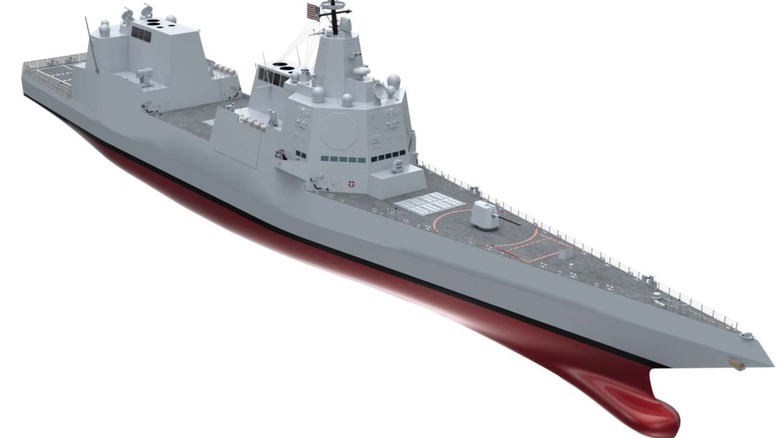The US Navy Is Modernizing Its Arleigh Burke Destroyers, And This One Just Passed A Major Test
The U.S. Navy reached a major milestone in an effort to modernize its Arleigh Burke class of guided-missile destroyers when the USS Ted Stevens (DDG-128) completed builder's sea trials in late September 2025. The tests confirmed that the second Flight III destroyer met all mechanical, electrical, and combat-system requirements in the trials conducted by Huntington Ingalls Industries', one of the top manufacturers of U.S. Naval ships. The Flight III upgrade focuses on two main systems, the AN/SPY-6 radar and the Aegis Baseline 10 Combat System.
When combined together, it becomes the Navy's first destroyer capable of handling air and missile defense at the same time. Each Flight III carries a hefty $2 billion price tag, an investment geared towards replacing older ships and keeping the class useful through the 2040s. With the new radar suite, power framework, and computing, the Flight III signals a generational leap forward that will keep the U.S. Navy ready against modern hypersonic and long-range missile threats.
Sea trials prove advanced systems are a go
The propulsion, sensors, and radar integration were all certified in the trials and showed that the destroyer is ready for the Navy's final acceptance. During the first Flight III trials that happened in the later part of 2022, there were issues with power conversion for the USS Jack H. Lucas (DDG-125), which was officially delivered in 2023. This lesson learned was used to help testing for DDG-128 go more smoothly, showing Ingalls' progress and how it's getting better at building this particular complex design.
Five more Flight III hulls are currently being built and will be ready for a full size destroyer crew. As the Navy retires the last of its 27 Ticonderoga-class cruisers, with the final ships expected to be retired from service some time around 2029, the newer Flight III destroyers will take over those cruisers” command-and-control and air-defense roles in carrier strike groups and Expeditionary Strike Groups (ESG) . These naval vessels weigh roughly 9,700 tons and are set to be the fleet's central air-defense hub, merging a hull design that's battle-tested with the latest radar and computing suite to maintain layered defense coverage across the world's oceans.
New radar, power systems and the future
The Raytheon AN/SPY-6(V)1 radar is a key technological upgrade for the Flight III destroyer. It's an advanced electronically scanned system about 30 times more sensitive than the older SPY-1D(V), and allows it to detect targets that are further away and can actually tell the difference between smaller and more closely spaced objects more accurately. Target-tracking capacity is dramatically expanded by the system's computer power, making simultaneous engagement of ballistic, cruise, and hypersonic threats possible when paired with Aegis Baseline 10 Combat System software. To support this demand, engineering spaces needed to be redesigned, and coupled with three Rolls-Royce AG9160 generator sets delivering 4 megawatts each, boosting available power to 12 MW, in addition to an increased cooling capacity to ensure radar performance is sustained under high electrical loads.
Because of these upgrades, the Flight III acts as a technological bridge to the Navy's next-generation DDG(X) program, a projected 13,500-ton warship that will build directly on the SPY-6 integration lessons. Being able to prove that these systems work as intended is very important to the Navy's long term goals and demonstrates how gradual design evolution can produce one of the most powerful destroyers in the world, prepared for the increase in multi-domain warfare.


